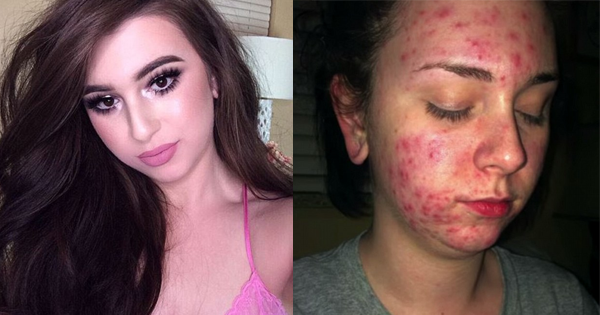Carly Humbert didn’t expect her life to change when she went to her doctor in 2014.

She’d always had relatively clear skin, and didn’t have any health problems.
So when she thought about having an IUD (intrauterine device) put in as her main method of birth control, she didn’t think much of it.
She’d done her research, and it sounded like a good idea. It was nearly 100 percent effective, and most women reported that they’d experienced no pain and little annoyance from the device. It’s supposed to effectively prevent pregnancy for up to five years.
But her problems started with the insertion process. “The pain of getting this thing put in me was the worst thing I’ve ever experienced, and I have a high pain tolerance,” says Carly.
She began feeling better a few days later, but then she started noticing the change in her skin.

It just kept getting worse and worse, she said.
“I was so upset and depressed about how my face looked. Every day I was crying, I couldn’t get out of bed…I looked disgusting.” She also experienced other hormonal problems, like mood swings and frequent migraines.
Hoping to take care of her acne, she saw a dermatologist, who told her that it was probably her IUD that was causing this imbalance in her hormones. He prescribed her something that was supposed to balance them, but it didn’t work.

She didn’t want to go through the painful process of having the IUD removed, so she tried another medication. This didn’t work either, and she finally acknowledged that she needed to remove it.
But when she removed it, it still wouldn’t go away. So she was put on Accutane, a harsh but effective medication, which required her to remain abstinent for six months. Her skin began to clear up within a month.

The IUD is safe for most, but as shown by Carly, it isn’t for everyone. Women who think they may want to try it should consult with their doctors before making this decision.





